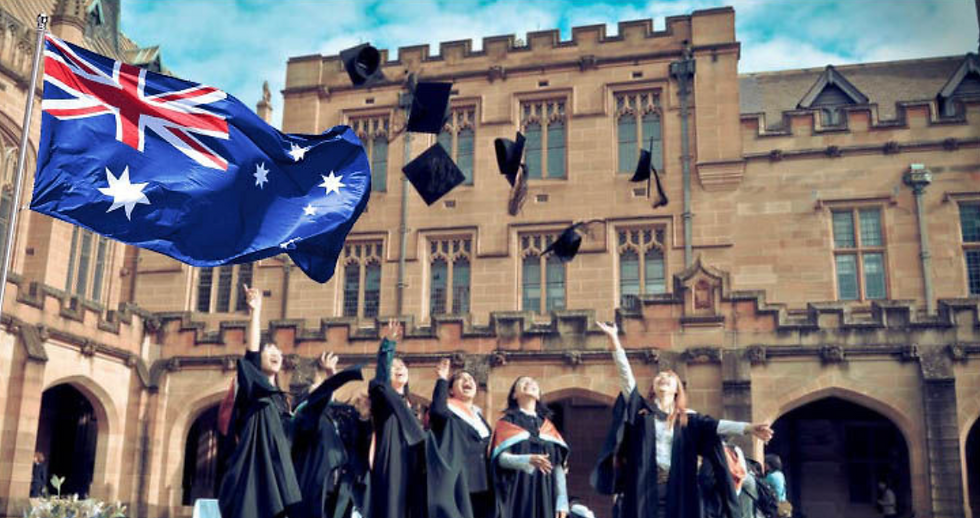Degrees of Disruption: Trump Administration and Impact on Higher Education
- WIF Team

- May 7
- 4 min read
Opinion piece
In parallel with his economic isolationism, the Trump administration is waging a calculated ideological campaign against the higher education sector—threatening not only academic autonomy but the foundational principles of free speech and diversity. Federal funding has become a political lever, with universities that promote diversity, equity, and inclusion (DEI) increasingly targeted for purportedly fostering progressive or liberal ideologies. This strategy is central to the Trump administration’s broader “Project 2025” agenda and marks a dangerous escalation in the politicisation of education.
The Trump administration will withhold $US2.2 billion in grants and $US60 million in contracts to Harvard University to pressure compliance with its political agenda (ABC, 2025). This is exacerbated by a recent decline in philanthropy following the institution’s handling of recent policy and campus activism. Donations to Harvard’s endowment have declined by over $150 million in 2024, with several billionaire donors severing ties with the university (Duffy, 2025).
The government’s encroachment into university governance undermines institutions’ ability to pursue independent research and support diverse discourse without fear of political retaliation. Proposals to eliminate DEI programs, limit student activism, and restrict discussions around topics like race, gender, climate action, and vaccines are especially alarming. These efforts threaten to mute the kind of open, critical dialogue that higher education is meant to nurture.
One striking example is the investigation into the Harvard Law Review over alleged racial bias - fitting squarely within a broader right-wing effort to dismantle diversity-focused academic policies under the guise of upholding civil rights.

Yet this approach falls flat when viewed alongside the continued practice of legacy admissions—widely recognised for favouring wealthy, white applicants and entrenching structural inequality. This contradiction exposes a troubling agenda: to silence marginalised voices and reinforce homogeneity in academic spaces.
Amidst the chaos, Harvard University has announced its intentions to operate without federal support by moving to borrow $750 million dollars from Wall Street (Duffy, 2025), however, Australian universities cannot afford the same luxury. A recent controversy erupted when Australian universities were asked to complete a U.S. questionnaire probing whether research projects were “no DEI” or “climate justice” initiatives, and to declare commitments to “protect women” and oppose “gender ideology.” These demands, described by some officials as ‘blatant foreign interference,’ are deeply concerning—especially given the scale of U.S. involvement in Australian academia and research. For example, Australian universities received approximately $400 million in U.S. government funding in 2024 – now at risk under the Trump administration and with nearly 1,000 formal joint programs, America’s influence is not just ideological, but financial.
Australia’s entire higher education sector is valued at $48 billion – just over half of Harvard’s endowment (Ciriello, 2025). Australian universities are unlikely to hold the financial resources necessary to safeguard their institutional independence to the same extent as Harvard. Regardless, universities have become increasingly reliant on alternative income streams over the last 30 years due to insufficient growth in government funding (Hare, 2024). In 2023, the government contributed to 9.6% of Sydney University’s revenue, whilst international student fees accumulated to $1.5 billion or 42.6% of total earnings (Ciriello, 2025).

Higher education is Australia’s largest services export, with international students comprising 35% of enrolments at Group of Eight universities (Cassidy 2024). However, the overreliance on foreign exports poses serious risk to the sector, considering the proposed cap to international student enrolments and recent visa restrictions. Whilst these fees are used to implement new programs or upgrade infrastructure, they actively fund world-class research.
Australia invests 1.68% of its GDP in research and development - well below the OECD average and government target of 3% (Ciriello, 2025). Universities are underfunded and reliant on unstable foreign revenue streams. Academic research and innovation is highly susceptible to limitations imposed by both domestic and international government policy.
These developments leave us at a precarious cross road. The Trump administration’s aggressive tariff policies are already reverberating across global markets, placing upward pressure on consumer prices and straining key trade relationships. But beyond the economic fallout, the politicisation of higher education reveals a deeper, more troubling challenge: the erosion of academic freedom in the name of ideological conformity.
For Australia, the consequences are twofold. Economically, our export dependent higher education sector is already vulnerable due to overreliance on international student fees and limited public funding and faces new risks tied to U.S. policy volatility. Institutionally, Australian universities now find themselves vulnerable to a geopolitical power struggle that threatens their autonomy and academic freedom. Going forward, there is a dire need to safeguard our higher education and reaffirmation of academic independence through robust policy and collective institutional efforts.
Until next time,
WIF 💙💙
(Written by Charlotte, Sally, Srishti)
ABC News. (2025, April 16). Trump slashes $US2.2 billion grant to Harvard after university defies White House demands. https://www.abc.net.au/news/2025-04-16/trump-administration-to-freeze-funding-for-harvard/105180950
Cassidy, C. (2024, August 2). Alarm bells over Australian universities’ financial dependence on international students. The Guardian. https://www.theguardian.com/australia-news/article/2024/aug/02/australian-universities-international-student-fees
Ciriello, R. (2025, April 21). Harvard stood up to Trump, our top universities could not afford to be so brave. The Sydney Morning Herald. https://www.smh.com.au/national/harvard-stood-up-to-trump-our-top-universities-could-not-afford-to-be-so-brave-20250421-p5lt5w.html
Clarke, J. (2025, May). What tariffs has Trump announced and why?. BBC News. https://www.bbc.com/news/articles/cn93e12rypgo.
Duffy, C. (2025, March 20). Australian universities losing US funding amid Donald Trump’s ‘America First’ agenda. ABC News. https://www.abc.net.au/news/2025-03-20/trump-america-first-policy-risking-australian-uni-research-funds/105072344
Hare, J. (2024, June 21). ‘Very wealthy’ unis ‘disingenuous’ about foreign student fees. Australian Financial Review. https://www.afr.com/politics/federal/unis-disingenuous-about-foreign-student-research-link-analysis-20240620-p5jnef
Picchi, A. (2025, April 9).See the full list of reciprocal tariffs by country from Trump's "Liberation Day" chart. CBS News. https://www.cbsnews.com/news/trump-reciprocal-tariffs-liberation-day-list/
Reddy, S. (2025, April 2). Reality Check: What Trump’s Supposed Retreat Really Means in a Historic Trade War. POLITICO. https://www.politico.com/news/magazine/2025/04/10/tariff-reality-check-trump-retreat-00285270
The Budget Lab Yale. (2025, April 15). State of U.S. Tariffs: April 15, 2025. https://budgetlab.yale.edu/research/state-us-tariffs-april-15-2025



Comments